16 Results
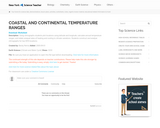
Students will investigate how distance from a large body of water affects the rate of heating and cooling at any given location. Students will analyze climographs which show the average monthly temperature and precipitation of various locations can be used to compare the rates.
- Subject:
- Earth Science
- Science
- Material Type:
- Activity/Lab
- Provider:
- New York Science Teacher
- Author:
- Becky Remis
- Date Added:
- 02/26/2019
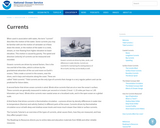
This tutorial gives a comprehensive overview of currents.
- Provider:
- National Oceanic and Atmospheric Administration
- Author:
- NOAA
- Date Added:
- 06/24/2019

In this lesson, students are introduced to the global circulation patterns of the atmosphere and the oceans, and investigate how those circulation patterns might influence their local region. Students use computer models to test predictions of ocean currents.
- Subject:
- Earth Science
- Science
- Material Type:
- Lesson Plan
- Provider:
- Science Education Resource Center at Carleton College
- Author:
- Erin Bardar, TERC
- Date Added:
- 02/26/2019
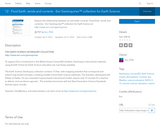
Students will use maps and pop-ups to characterize ocean currents. They will also use remote sensing to identify warm and cold currents.
- Subject:
- Earth Science
- Science
- Material Type:
- Activity/Lab
- Provider:
- ESRI
- Author:
- Esri_TESS
- Date Added:
- 02/26/2019
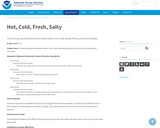
Students will observe the effects of the layering of warm and cold water that is more or less saline than the normal.
- Provider:
- National Ocean Service
- Author:
- Jerry D. Roth
- Date Added:
- 06/24/2019

This resource explains how ocean currents, including the Gulf Stream, transfer heat from one place to another. It includes diagrams, videos, practice questions, a study guide, flash cards, interactive assessments, and articles on real world applications.
- Subject:
- Earth Science
- Science
- Material Type:
- Activity/Lab
- Provider:
- CK-12 Foundation
- Author:
- Dana Desonie
- Date Added:
- 02/26/2019

Students will describe how technological advances have impacted the field of oceanography, focusing on the use of satellites. They will also observe seasonal changes in sea surface temperatures (SSTs) throughout the year, identifying months with the warmest and coldest coastal SSTs. This activity is part of "Investigating Your World With My World GIS," a set of activities designed for use with My World GIS software (which can be downloaded at www.natgeoed/myworldgis) to help students learn key content and practice spatial problem solving.
- Subject:
- Earth Science
- Science
- Material Type:
- Lesson Plan
- Provider:
- National Geographic
- Author:
- Hedley Bond, Jennifer Vuturo-Brady, and Steven Moore
- Date Added:
- 02/26/2019
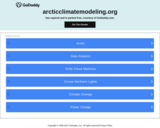
In this lesson, students investigate basic principles that relate to thermohaline circulation. Then they view a short video that connects these concepts to oceanic circulation and the potential for climate change.
- Subject:
- Science
- Material Type:
- Lesson Plan
- Provider:
- Geophysical Institute, University of Alaska Fairbanks
- Date Added:
- 05/23/2017

In this lesson, students learn about air. Through a variety of hands-on experiences presented as stations in the classroom, students will discover properties of air, including that air has volume, mass, and pressure; that it is compressible; and that it expands when heated. They will also learn about the major molecular components of our atmosphere (nitrogen, oxygen, argon), the four layers of our atmosphere, and that air contains water vapor. Note: The videos referenced in the lesson narrative are no longer available online, but the station activities are not dependent on the content in the video.
- Subject:
- Earth Science
- Science
- Material Type:
- Lesson Plan
- Provider:
- NCDENR
- Author:
- NC Air Awareness Program
- Date Added:
- 02/26/2019
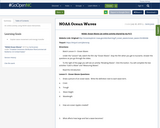
An online activity using NOAA wave interactives.
- Subject:
- Earth Science
- Science
- Material Type:
- Homework/Assignment
- Date Added:
- 07/30/2019

This article describes the role of ocean temperatures in glacial melting, combined with global warming.
- Subject:
- Earth Science
- Science
- Material Type:
- Reading
- Provider:
- NASA
- Author:
- NASA
- Date Added:
- 02/26/2019

Studenst will simulate the layers of ocean water and explore their densities; afterwhich they will collaborate on the answers to why their observations occurred.
- Subject:
- Earth Science
- Physical Science
- STEM
- Material Type:
- Lesson Plan
- Author:
- Kathy Bosiak
- Date Added:
- 11/28/2019

This video demonstrates the role of heat capacity on ocean circulation, as it relates to climate change.
- Subject:
- Earth Science
- Science
- Material Type:
- Lesson
- Provider:
- NASA
- Author:
- NASA
- Date Added:
- 02/26/2019

This video shows how quickly oil spills can be carried by currents.
- Provider:
- National Oceanic and Atmospheric Administration
- Author:
- NOAA
- Date Added:
- 06/24/2019

Students investigate the relationship between winds, surface currents, sea surface temperature and upwelling/downwelling off the northern Pacific coast. Students analyze data to make predictions about current upwelling/downwelling conditions.
- Subject:
- Earth Science
- Science
- Material Type:
- Activity/Lab
- Provider:
- NANOOS
- Author:
- NANOOS
- Date Added:
- 02/26/2019